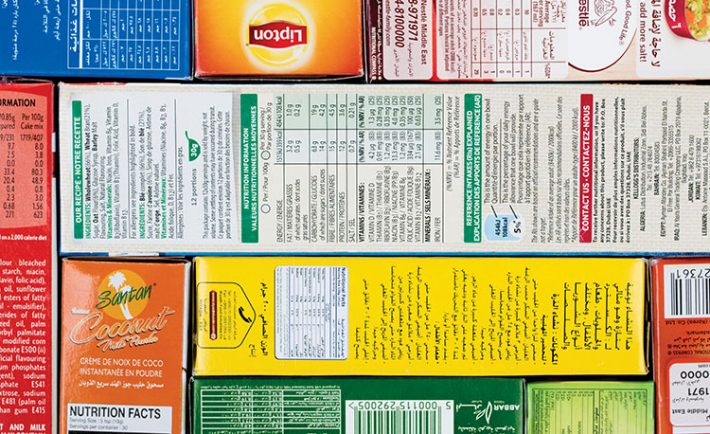Use nutrition facts to make informed choices about food.
Have you ever looked at a packaged food item that had a food label you just couldn’t understand? Food labels are tough to decipher, with terms and sections that can be overwhelming. The tips and tricks will help you make an informed choice on whether a food product is healthy or not.
It is important to note that food products are all different depending on the food category they are in, for instance fruit has a higher level of sugar yet is still healthy because of the vitamins it contains. In comparison, candy also have high sugar levels, but is not healthy because it is also in fat and sodium and contains no nutrients.
It is easiest to read the label top to bottom, starting with the serving size. Then, look at the “calories” and “calories from fat.” Calories indicate the quantity of energy that is obtained from the food. This section is very important if you are trying to maintain or lose weight. As a general rule of thumb for a 2000 calorie diet, a food product around 50 calories is low, 100 calories is normal and 500 or more is high. Underneath the “% Daily Value*” is the general suggestion of intake for each key nutrient for a 2000 calorie diet.
The following section, which includes the percentage of nutrients in the food, is important because high intake of saturated and trans fats can increase the chance of diseases such as coronary heart disease and cancers. Saturated fats increase cholesterol levels, but trans fats are naturally found in food. Therefore it is important to choose food products that are low in saturated fats. In order to maintain a healthy lifestyle, the percentages in this section must remain as low as possible. Contrastingly, some nutrients like fibre, protein, vitamins, calcium and iron are vital for your health for different reasons.
A quick summary:
- Cholesterol is important to produce Vitamin C but too much of it can cause arteries to clot and cause a heart attack.
- Sodium is a salt that is vital for fluid balance but high quantities can cause high blood pressure.
- Dietary Fiber decreases cholesterol levels and is necessary for regular bowel movements
- Protein is necessary to maintain energy levels.
- Vitamin A is vital for eyesight and healthy skin.
- Vitamin C repairs and rebuilds tissue in order for our bodies to heal.
- Calcium is necessary to maintain healthy bones and teeth.
- Iron helps the production of red blood cells, which carry oxygen around the body.
Tip: “Reduced Fat” has 25% or less fat than the normal product would, while “Light” indicates that 50% of the fat is reduced and “Low Fat” is a product that has 3 grams or less of fat per serving.










